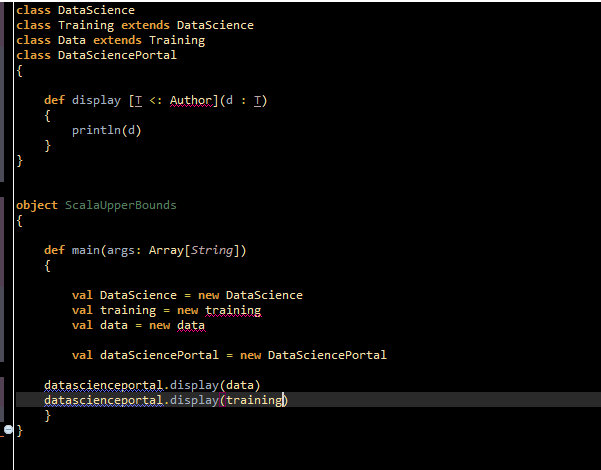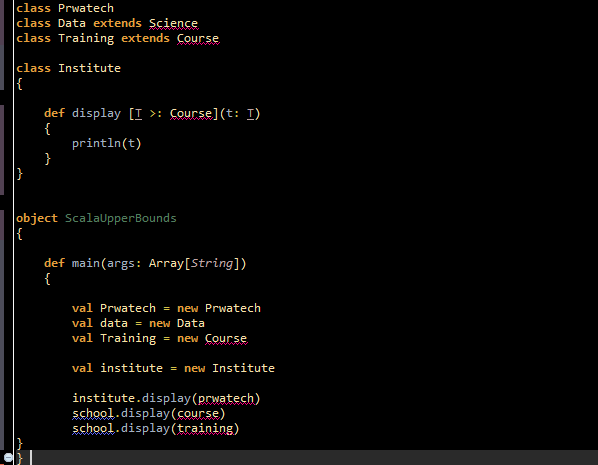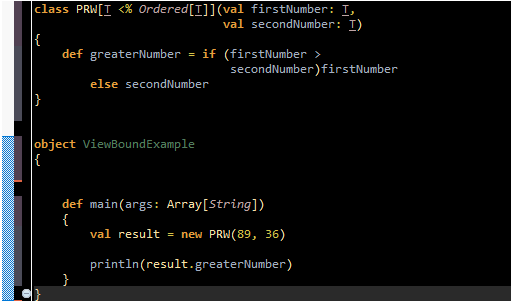Scala – Bound Types
Upper Type Bounds | Tour of Scala
Scala Upper Bounds
In Scala, upper type bounds are a feature that allows developers to specify constraints on type parameters in generic classes and methods. An upper type bound restricts the type parameter to be a subtype of a specified type.
For example, consider a generic class Container[T] where T is constrain by an upper type <: SomeType. This means that T must be a subtype of SomeType, allowing instances of Container to hold only elements of type T or its subtypes.
Upper type bounds are denoted using the <: symbol followed by the upper bound type. Multiple upper type bounds can be specified using the with keyword.
Upper type bounds are useful for enforcing type safety and expressing relationships between types in a flexible and reusable manner. They enable developers to write generic code that works with a specific subset of types, promoting code reuse and enhancing type safety in Scala applications.
Understanding upper type bounds is important for writing generic and flexible Scala code that effectively leverages the type system to enforce constraints and ensure correctness at compile-time.
A program to demonstrate scala upper bounds:

Scala Lower Bounds
A program to demonstrate Scala Lower Bounds:

Scala View Bound

Upper Type Bounds | Tour of Scala






